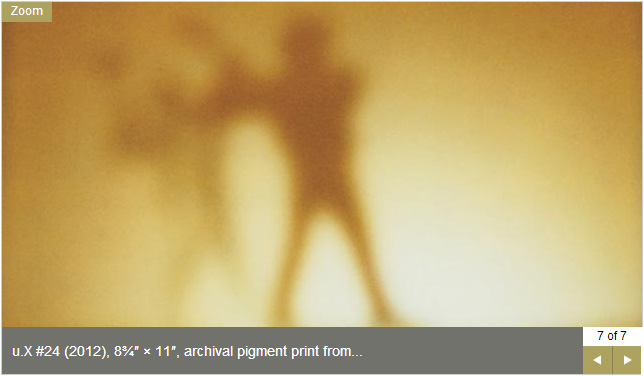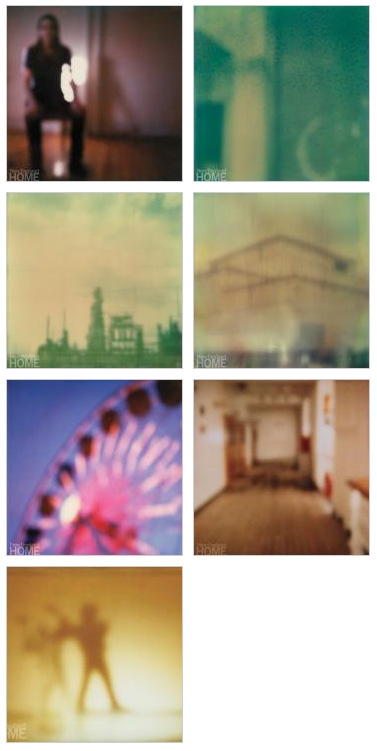 Artist Susan Mikula: Polaroid Moments
Artist Susan Mikula: Polaroid Moments
Author: Caroline Cunningham
 There’s an irony in the idea of an accountant being an accomplished artist. These seem like inconsistent, almost contradictory, pursuits. But they share a desire to reduce everything to its essence—by getting to zero on a balance sheet, or by revealing the unexpected through rigorous composition and distillation. Susan Mikula’s luminous photographs reflect both the precision of her mathematical background and a distinctive vision that uncovers complex beauty in ambiguity. She makes images that are both familiar and strange, like the corridor depicted in sic transit #4. The viewer may have a flicker of vague recognition for this indistinct space, but it’s evanescent. We’re pulled into a disorienting world of muted tones and texture, and we’re spellbound.
There’s an irony in the idea of an accountant being an accomplished artist. These seem like inconsistent, almost contradictory, pursuits. But they share a desire to reduce everything to its essence—by getting to zero on a balance sheet, or by revealing the unexpected through rigorous composition and distillation. Susan Mikula’s luminous photographs reflect both the precision of her mathematical background and a distinctive vision that uncovers complex beauty in ambiguity. She makes images that are both familiar and strange, like the corridor depicted in sic transit #4. The viewer may have a flicker of vague recognition for this indistinct space, but it’s evanescent. We’re pulled into a disorienting world of muted tones and texture, and we’re spellbound.
Mikula grew up in a creative family where art was a backdrop to everyday life. Courses in color theory at Hampshire College in Amherst, Massachusetts provided some academic structure to her journey, but she has always been her own teacher, and a fierce independence about the artistic process, along with a deep understanding about the chosen tools of her craft, gives her work such power.
These tools are, first and foremost, Mikula’s collection of vintage Polaroid cameras and film. The unpredictable nature of each camera, as well as the volatility of expired film, is central to her method. Mikula takes notes about each of her cameras before selecting a model for a specific project; she takes the same care in choosing her film. Until recently, she used only natural light, and she never manipulates the image after taking the shot. The Polaroid print is then scanned and reproduced, with astonishing results. The pinhole camera and rare Polaroid Chocolate film used in bearings #1 captures, in moody abstraction, the experience of being on a fishing boat off Cape Cod. In Civil Twilight, Santa Monica, CA #1, a Ferris wheel becomes a half-circle of refracted light, swirling through our collective memories of such a place and time.
 Mikula regards the printing, mounting and installation of her photographs as almost as important as the images themselves. For her 2006 series, 9 Portraits, the Polaroids were printed on nine-foot panels of industrial mesh, suspended from the ceiling of the 4-H Exhibition Hall at the Northampton Fairgrounds. The rustic space was a deliberate challenge to the formal way of looking at art. Despite its monumental size, the figure of a seated woman in 9 Portraits #9 resembles a delicate Giacometti sculpture, formed in part by light and shadow.
Mikula regards the printing, mounting and installation of her photographs as almost as important as the images themselves. For her 2006 series, 9 Portraits, the Polaroids were printed on nine-foot panels of industrial mesh, suspended from the ceiling of the 4-H Exhibition Hall at the Northampton Fairgrounds. The rustic space was a deliberate challenge to the formal way of looking at art. Despite its monumental size, the figure of a seated woman in 9 Portraits #9 resembles a delicate Giacometti sculpture, formed in part by light and shadow.
While shooting, Mikula moves with intuitive speed, but little is left to chance, and this is also true of her prolific career. She spent years working as an accountant while participating in group shows and juried exhibitions before getting her first solo show in 1998. Her patient ambition helps explain her extraordinary success, but it’s the consistent intelligence of her images that has made such an impact on the art world. By stripping away extraneous detail and softening the edges to the point of dissolution, Mikula uncovers the central form of her subject, as well as the multi-layered narratives within. American Breakbulk #13 and #21, American Device #49 and American Vale #17 are part of an extended series called American Bond in which Mikula documents abandoned industrial sites across the country. Her monochromatic images convey the sadness in these decaying structures, but also reveal the inherent majesty—they’re the gorgeous ruins of an ancient empire. “These photographs are neither damning, nor exultant,” explains Mikula. “They are just who we are.”
Mikula’s newest series, u.X, was inspired by the Lascaux cave paintings in France, and by the small plastic figures she played with as a child, making imaginary worlds with her sister in which “the toy wasn’t the story—the world we created was the story.” In u.X #24, printed on handmade mulberry and hemp paper from Japan, the figure almost disappears into saturated hues of amber, sienna and ochre. The result is mysterious and somewhat melancholy, reminding us of a past we might have known, or imagined.
•
EDITOR’S NOTE: Susan Mikula is represented in New England by William Baczek Fine Arts, Northampton, Mass., (413) 587-9880, wbfinearts.com. To see more of her work, visit susanmikula.com.
